Our home, their land
Fiercely proud Métis in tiny St. Ambroise fly the Maple Leaf as Canadians, never losing sight of the brutality and betrayal the flag represents
Advertisement
Read this article for free:
or
Already have an account? Log in here »
To continue reading, please subscribe:
Monthly Digital Subscription
$1 per week for 24 weeks*
- Enjoy unlimited reading on winnipegfreepress.com
- Read the E-Edition, our digital replica newspaper
- Access News Break, our award-winning app
- Play interactive puzzles
*Billed as $4.00 plus GST every four weeks. After 24 weeks, price increases to the regular rate of $19.00 plus GST every four weeks. Offer available to new and qualified returning subscribers only. Cancel any time.
Monthly Digital Subscription
$4.75/week*
- Enjoy unlimited reading on winnipegfreepress.com
- Read the E-Edition, our digital replica newspaper
- Access News Break, our award-winning app
- Play interactive puzzles
*Billed as $19 plus GST every four weeks. Cancel any time.
To continue reading, please subscribe:
Add Free Press access to your Brandon Sun subscription for only an additional
$1 for the first 4 weeks*
*Your next subscription payment will increase by $1.00 and you will be charged $16.99 plus GST for four weeks. After four weeks, your payment will increase to $23.99 plus GST every four weeks.
Read unlimited articles for free today:
or
Already have an account? Log in here »
Hey there, time traveller!
This article was published 30/06/2017 (3030 days ago), so information in it may no longer be current.
ST. AMBROISE — There is no sign of the little red convent now, no scar on the grassy scrap of prairie. No rubble, no debris; only a bushy tree where the front door used to be. The fire devoured the convent completely.
Only a handful of landmarks here, in the breezy heart of St. Ambroise, bore witness to the convent’s 1958 demise. Most were built later, including the weathered and nameless white church that still holds mass here every Sunday.
Should have seen the old church, George Lavallee says. It had a big dome over the altar and murals gazed from the walls.
“It was beautiful in there,” he says. “Oh my God.”
But the years took their toll and that one was torn down.
The cemetery was here before the convent, though, facing the site from across a broad dirt road. A small sign over the metal gate declares it was consecrated in 1906, though people lived and died on this land long before that.
Inside the gate, new flowers are lovingly arranged on old graves. Names etched on the stones trace the long history of St. Ambroise’s Métis: here lie generations of Fleurys, Ducharmes and two separate branches of Lavallees.
Outside the church, Floyd Lavallee pushes a mower along the broad expanse of its lawn. (He’s from the other branch of the town’s Lavallees, no relation to George.) Now 70, he retired a few years back, but still helps out around town.
There’s nothing left to see of the old convent now, Floyd says with a shrug. It survives only in the memories of St. Ambroise’s elders. And Floyd was a young boy when the nuns took over the school.
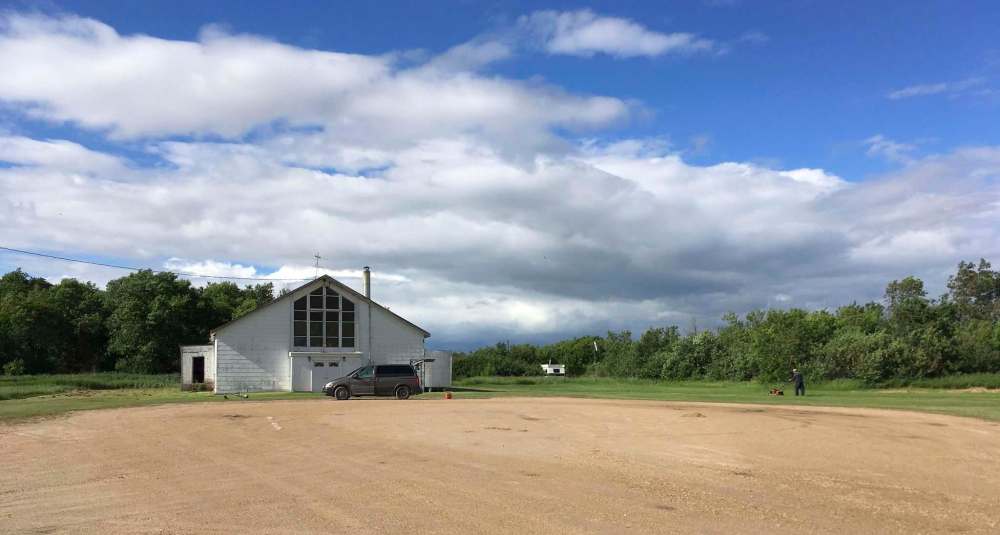
So, what does he remember?
“Well, I’d just as soon forget it,” he says. “It wasn’t pleasant; I’ll put it that way.”
When the nuns arrived in St. Ambroise, about 20 minutes north of Portage la Prairie, the community was thriving. About 1,000 people lived there, almost all of them Métis, carving out a living through hard work and old traditions.
Most families had cattle, George remembers. They trapped muskrat and mink and fished in the winter. Every fall, fur buyers would set up shop in the dance hall. The rest of the year, the place rang with square dances and fiddlers.
“People had a lot of fun up here,” says George, 77. “We weren’t rich people, but we had a hell of a good time.”
At the time, nearly everyone in the community spoke Michif, a unique language of the Métis. It is a remarkable tongue, seamlessly forged from equal parts French and Cree, and its sounds flowed through St. Ambroise life.
Today, George is one of perhaps 200 Michif speakers left in Manitoba. It isn’t only residential and day schools that devastated the language, though they played a large part; the linguistic shame inflicted on children left its mark.
“When the nuns came, goodbye — everything went,” George says. “There went our Michif language.”
In the mid-1940s, the church took over St. Ambroise’s school. Discipline was swift and brutal. One priest paced around classes, holding a broad strap. When he beat them, the kids thought, he seemed to savour each smack.
“I think they thought we were just Indians,” Floyd says, tugging his cap. “They were trying to beat the Indian out.”
In the winters, nuns forced children to kneel on their hands on the cold ground; if a child moved, Floyd recalls, they’d get slapped on the head. Meanwhile, speaking Michif was out of the question — but so was their Métis French.
“Our French was no good to them,” George says. “They spoke that French from Montreal. But we didn’t understand that French, that was the hard part. We couldn’t understand the words they were saying. Our education was down.
“People were up in arms about that,” he continues. “They said, ‘Our kids aren’t learning nothing.’”
Soon, some parents packed their kids up and moved away from the straps and the slaps and the nuns. Other families stayed and stuck it out, though the kids struggled. Even now, more than 50 years later, it is painful for them to remember.
In 1958, the convent burned down. The next year, the priest’s rectory followed, and after that the school went back to normal. Teachers from Winnipeg moved into the community, and though they taught in English, it was still better.
“Then St. Ambroise was at peace,” George says. “We didn’t want them anyway.”
Canada turns 150 years old Saturday. Cash rained from Ottawa to pay for celebrations; a nation is urged to admire its own reflection. Yet this part gazes back from the mirror, too, emerging from the shadows where it hid.
Still, nothing is black and white. Today, almost every verdant yard in St. Ambroise flies a Canadian flag.
“Oh, we’ve got some pride,” Floyd says. “That will never go away.”
● ● ●
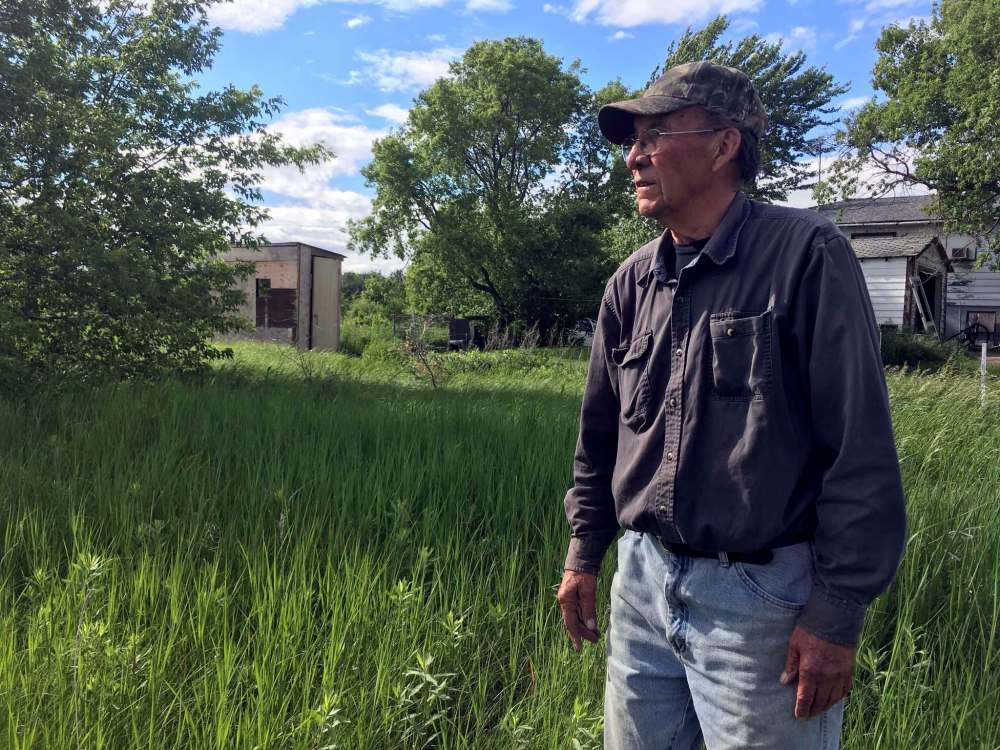
At some point in the late 19th century, as U.S. soldiers advanced on the Dakotas, a band of Sioux entered Manitoba. According to the oral history that George Lavallee knows, they set up camp on the western edge of St. Ambroise.
George shows where they carved a circular ditch around the camp for protection. He points to deep holes, hidden by grass, that pockmark the site; the Sioux dug them, he says, to shelter women and children.
The story that George knows is that the Sioux’s arrival on this territory met with resistance from the Métis and their allies, the Cree. After days of tension, the community sent a large delegation to tell the Sioux to keep moving.
“They said, we’re not going to touch your children,” George explains. “We’re not going to touch your women.”
So the Sioux left, cutting west across Lake Manitoba’s belly, through the patch of marshland that people in St. Ambroise still call Sioux Pass. The camp remained as they left it, watched now by a lonely old hunting lodge.
It’s a sad story: a clash of three peoples, each of them trying to hold on to space to breathe, space to live free from the advancement of colonization. By that time, a newborn Canada had already begun to betray Métis in Manitoba.
“If it wasn’t for Métis people, there wouldn’t be Manitoba,” Floyd says.
George nods vigorously. “Exactly,” he says. “But they don’t say that.”
This is true of Manitoba, where Louis Riel’s resistance defined the province’s entry to Confederation.
But the thought can be taken one step further: Canada, as we know it, was built in large part on Métis homelands and Métis labour.
In Ottawa, John A. Macdonald had contempt for the Métis; he referred to them as “those wild people.”
Yet in trying to soothe Riel’s resistance, Canada made concessions: it pledged 1.4 million acres to the Métis and their children.
When Canada arrived in the Red River Valley, it sent soldiers. Riel fled, and the ensuing years saw a waning of Métis political power. Over the next decade, the federal and provincial governments failed to protect those 1.4 million acres.
Instead, settlers from Ontario filled up the Prairies and began to drive the Métis out of the Red River Valley. For more than 100 years, they would soldier on as what they called “the forgotten people,” largely unrecognized by Canada.
“We never had a place to go,” Floyd says. “That’s why we were stuck in the middle. They just totally ignored us. I don’t know what we have to do to get recognized. Well, maybe one day. Maybe not in my lifetime.”
In early June, Winnipeg Mayor Brian Bowman held a ceremony to mark the city’s new Indigenous Accord. The Manitoba Metis Federation declined to sign, citing a lack of recognition of Métis survivors of residential schools.
Instead, on the same day and at nearly the same time, it held its own ceremony for Métis survivors. In the grassy lawn outside the MMF’s Henry Street offices facing the Disraeli Freeway, supporters planted a sea of red paper hearts.
“Kishkishi lii zaanfaan,” one read, in Michif. Remember the children.
George Lavallee spoke at that ceremony. His voice quavered as he remembered the cruelty the kids of St. Ambroise endured. He remembered how, when the convent burned, it was as if the community let up a great cheer.
Yet things are changing. Riel has not been posthumously pardoned by Canada, but he is taught now as the father of Manitoba. A provincial holiday bears his name; his statue sits on the legislature grounds overlooking the Red River.
Meanwhile, in 2013, the Supreme Court of Canada ruled the nation failed to uphold its 1870 promise to protect 1.4 million acres of Métis land in Manitoba. Last year, the court declared that the Métis are the constitutional responsibility of the federal government, a landmark decision after years of jurisdictional wrangling.
And in 2008, Lavallee was in Ottawa when then-prime minister Stephen Harper apologized to residential school survivors. Like a lot of people in the room, he wiped tears from his eyes.
He had been waiting to hear those words his entire life.
● ● ●
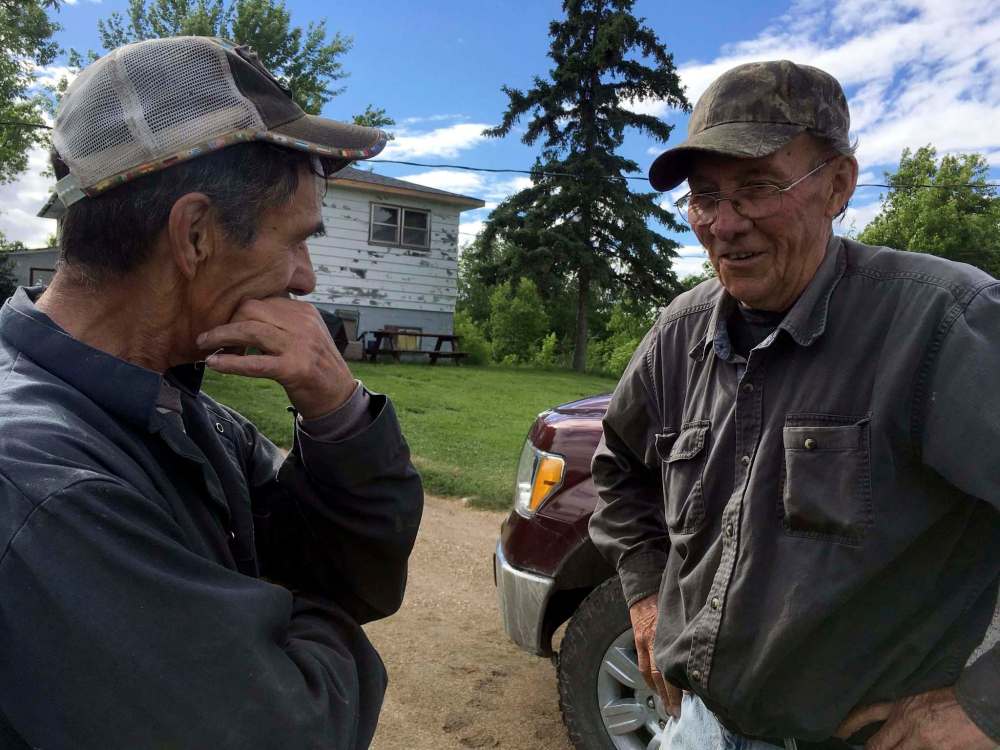
George keeps a handful of CDs in his truck. There is one featuring his late cousin Len, who had a song called Life in St. Ambroise; there’s an album called Le Métis by Floyd’s brother, Darren Lavallee. “A hell of a fiddler,” George says.
As he guides his truck down St. Ambroise’s quiet roads, he points out where the vibrant town of his youth seeped away. The fur traders stopped coming. The dance hall burned down. One by one, the four big stores closed.
One blow followed another. In 2011, St. Ambroise beach was slammed by a devastating storm; an economic engine for the town, it has not fully recovered. The once-popular campground is now shuttered.
Yet the little community held on to its spirit. Every summer, St. Ambroise hosts a big country jamboree, with a $5,000 fireworks display. With the American dollar as strong as it is, bookings for this fall’s hunting guide season are up.
Meanwhile, a handful of young people have been trickling back into the community, opting to raise their children in this quiet nest of about 200 on the Prairies. George’s grandchildren come back often to fish or hunt and hear his old stories.
“The Métis went through a hell of a lot, I’m telling you straight,” George says, as he surveys the town’s heart. “Our families, before that, went through a lot to establish themselves. But they never let go. They were strong people.
“They planted their roots out here, and this is where they lived. This is our land.”
So St. Ambroise, he thinks, will never be empty. Somehow, he thinks, his people will hang onto this land, and its long memories. The Métis were here before Canada, and if Canada forgot about that, the people here never did.
For the rest of the country, perhaps there’s no better time than July 1, 2017, to remember.
“We were born here,” George says, “and we’re going to die here.”
Floyd breaks into a wide grin. “Well, not too far to go now, hey, George?”
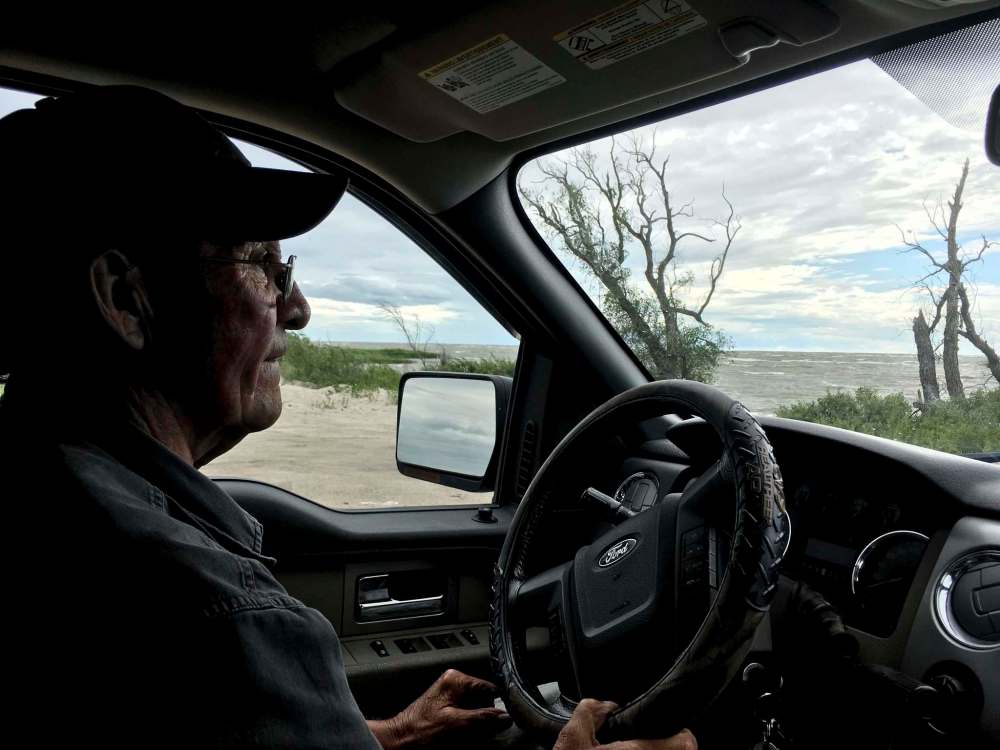
melissa.martin@freepress.mb.ca
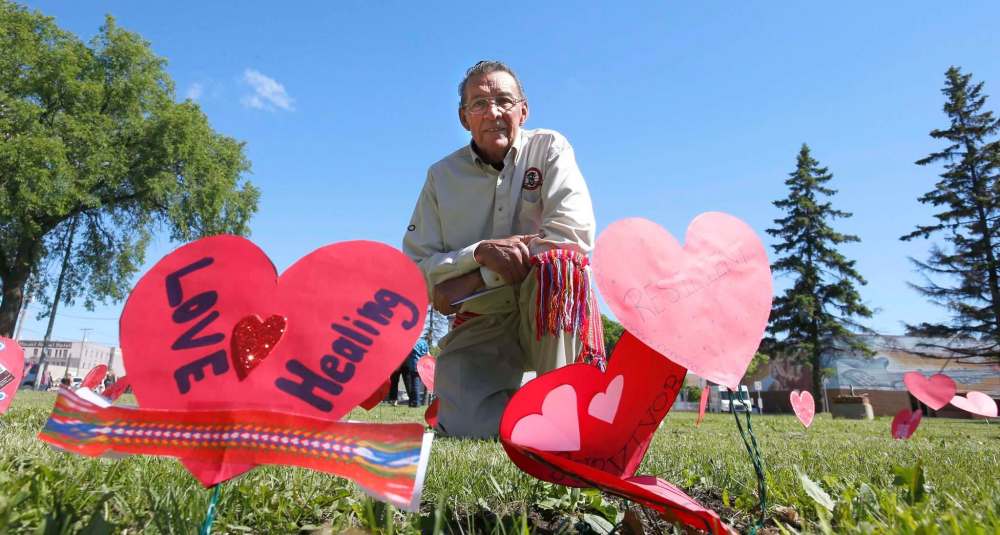

Melissa Martin
Reporter-at-large
Melissa Martin reports and opines for the Winnipeg Free Press.
Every piece of reporting Melissa produces is reviewed by an editing team before it is posted online or published in print — part of the Free Press‘s tradition, since 1872, of producing reliable independent journalism. Read more about Free Press’s history and mandate, and learn how our newsroom operates.
Our newsroom depends on a growing audience of readers to power our journalism. If you are not a paid reader, please consider becoming a subscriber.
Our newsroom depends on its audience of readers to power our journalism. Thank you for your support.

